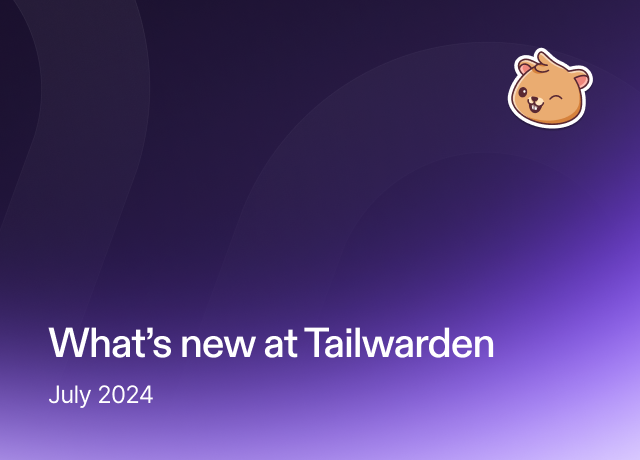
Mastering BigQuery: an in-depth guide to cost management
Crack the code on BigQuery costs with Tailwarden

What is BigQuery?
BigQuery is a fully-managed, serverless data warehouse offered by Google Cloud. It enables super-fast SQL queries using the processing power of Google’s infrastructure. Designed for large-scale data analytics, it allows you to analyze petabytes of data with ease, leveraging a highly scalable architecture. BigQuery supports a variety of data formats and integrates seamlessly with other Google Cloud services, making it a powerful tool for data-driven decision-making.
BigQuery offers several advantages:
- Easy to set up: Quick deployment without the need for extensive configuration.
- SQL support: No need to learn a new query language; supports standard SQL and even allows embedding JavaScript.
- Incredible power: Capable of handling vast datasets efficiently.
- Columnar storage: Optimized for queries that scan large datasets, providing very fast response times.
These benefits come with costs. There are numerous stories of people overspending on BigQuery due to a lack of cost monitoring. The price can scale as high as BigQuery is fast.

How does BigQuery pricing Work?
BigQuery pricing can seem complicated, but in reality, it's quite straightforward. There are three main types of costs:
- Storage costs: These are relatively low and are charged based on the amount of data stored in BigQuery, calculated per terabyte per month.
- Data transfer costs: Charges apply when data is moved out of BigQuery, especially across different regions or to external services. This cost can become significant if you need to download large datasets frequently but would remain relatively low otherwise.
- Query costs: This is where most of your expenses will be. BigQuery charges based on the amount of data processed by your queries. There are two types of query costs:
- On-demand pricing: You pay for the bytes processed by your queries. This is great because you only pay for what you use. However, caution is needed. For example, if you have a dataset larger than 10 TB and a user accidentally runs a
SELECT *query, costs can skyrocket quickly. - Flat-rate pricing: Offers a predictable cost structure for high-volume users, allowing you to purchase dedicated query processing capacity.
- On-demand pricing: You pay for the bytes processed by your queries. This is great because you only pay for what you use. However, caution is needed. For example, if you have a dataset larger than 10 TB and a user accidentally runs a

Understanding costs with Tailwarden
Tailwarden provides comprehensive monitoring and cost analysis features specifically designed for BigQuery. By integrating Tailwarden with your BigQuery environment, you can gain detailed insights into your data usage and associated costs. Tailwarden's platform allows you to track cost trends over time, identify cost spikes, and understand which queries or datasets are driving your expenses. This level of visibility is crucial for maintaining control over your cloud spending.
You can easily monitor data transfer and storage costs with Google Cloud's Cost Explorer. However, gaining insights into query costs is significantly more complex. That's where Tailwarden comes in, providing the transparency you deserve. Our platform offers detailed visibility into your query costs, helping you understand and manage them effectively.
Deep dive into your costs with Tailwarden

Tailwarden allows you to dive deep into your BigQuery costs by offering features like:
- Query-level analysis: View cost breakdowns for individual queries. For instance, identify which
SELECT *queries are consuming excessive resources and optimize them to reduce costs. - Cost attribution: Assign costs to specific projects or departments, helping you understand who or what is driving your expenses. This is particularly useful for organizations with multiple teams using BigQuery.
- Historical cost trends: Analyze historical data to identify cost trends and predict future expenses. This can help you budget more accurately and implement cost-saving measures proactively.
- Alerting and notifications: Set up alerts for unusual spending patterns or when costs exceed predefined thresholds. This ensures you are immediately aware of any unexpected cost spikes, allowing you to take action swiftly.
For example, if you notice a sudden spike in query costs, Tailwarden can help you trace it back to a specific user or query, enabling you to address the issue directly and prevent future occurrences. This level of granularity and control is invaluable for maintaining efficient and cost-effective cloud operations.
See how easy it is in this short video:
Optimizing your BigQuery costs
Now that you have full visibility and control of your costs thanks to Tailwarden, you can think about cost optimization. Consider the following best practices:
- Efficient query design: Optimize SQL queries to process only the necessary data. Use preview options to estimate costs before running large queries.
- Partitioning and clustering: Implement data partitioning and clustering to reduce the amount of data processed by queries, thereby lowering costs.
- Cost control mechanisms: Utilize BigQuery's cost controls, such as setting budget alerts and caps on daily query usage.
- Data lifecycle management: Regularly review and manage your data lifecycle to ensure that outdated or unnecessary data is archived or deleted, reducing storage costs.
By leveraging these strategies and tools like Tailwarden, you can effectively manage and reduce your BigQuery expenses while maintaining high performance and scalability for your data analytics needs.
Conclusion

BigQuery is a powerful tool for large-scale data analytics, offering quick setup, SQL support, and impressive performance. However, its cost can quickly escalate if not properly managed. Tailwarden provides the visibility and control needed to manage BigQuery expenses effectively. With Tailwarden, you can monitor query-level costs, attribute expenses to specific projects, analyze historical trends, and set up alerts for unusual spending. These features, combined with best practices for cost optimization, ensure you can leverage BigQuery's capabilities without overspending. Embrace Tailwarden for smarter, more efficient cost management in your cloud operations.



